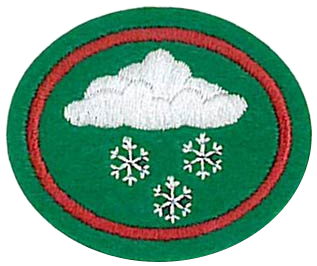AY Honors/Cold Weather Survival/Requirements
1. Know three most important survival items that you can carry in your pocket.
2. Research and discuss the following regarding cold weather apparel.
- a. Benefits and disadvantages of clothing made of wool, polypropylene, cotton, nylon or combinations. How does each type affect the body when it is wet? What other/newer clothing materials are recommended for cold weather survival? Why?
- b. Benefits of layering clothing. What clothing materials work next to your skin? On the outer levels? In-between? Why?
3. Choose from some of the items on the following list and create your own survival kit that can be carried in a Hydro-pack or Fanny-pack. Tell how each item would be useful.
4. Discuss the hazards of hypothermia, a condition in which the body’s core temperature drops below the required temperature for normal metabolism and body functions. Body temperature is usually maintained near a constant level of 98–100 °F.
- a. MILD symptoms
- b. MODERATE symptoms
- c. SEVERE symptoms
5. Discuss with your group each phrase of the following statement.
“One of the most difficult survival situations is cold weather. Cold is a far greater threat to survival than it appears. It decreases your ability to think. It weakens your will to do anything except get warm. It numbs the mind and body. It subdues the will to survive.”
6. Discuss the following:
- a. Why you need calories
- b. The Buddy System and why it is important
7. Memorize the Hypothermia “Umbles” and which stage they occur in: (Mumble, Grumble, Fumble, Stumble Tumble).
8. Watch a quality video/documentary on Survival and Hypothermia.
9. Contact your local Search & Rescue and ask them to speak to your club.
10. Review and demonstrate the following instructions for survival and rescue.
- a. Evaluate to determine if you are lost.
- b. Blow your whistle. Remember that three of anything is universally recognized as a call for help.
- c. (If you are cold, wet or hungry skip this step, build a fire and spend the night). Mark your location with something unmistakable. Venture out, and circle your marker while blowing your whistle and praying. Move your marker when you recognize something or if you lose sight of the marker.
- d. Light a fire and build a shelter if it is afternoon (timing is dependent on your specific gear and environment). Stop trying to find your way out and plan to spend the night. Remember that possibly nobody is looking for you yet. Your ability to start a fire and be prepared for the night can make the difference between living and dying. Fire can provide warmth, companionship, comfort and safety. Your smoke and flames may signal a rescuer.
11. Practice the following survival skills on a club outing.
- a. Finding direction without a compass.
- b. Starting a fire using: Flint & magnesium, steel wool & battery.
- c. Keeping a fire going using fuzz sticks, shaved sticks, moss, your tinder. Practice in wet conditions.
- d. Demonstrating how to build a rescue fire (lots of smoke).
12. Complete the following Group Activity or its equivalent within a Cold Weather Survival context.
- a. Build 3 shelters such as: a snow cave, a shelter with tree branches, a shelter with a tarp or rain poncho. Include proper placement of your fire in each situation.
- b. Make your own fire starter using items such as paper egg carton, sawdust and wax, or other materials of your choosing that will last at least 10 minutes.
13. Use the following subjects for worship talks:
- a. Spiritual Hypothermia
- b. Spiritually Lost
- c. Spiritual Preparedness
14. Memorize at least two Bible texts that you feel might bring you comfort in a Cold Weather Survival situation such as Psalms 34:7; Matthew 28:20.


